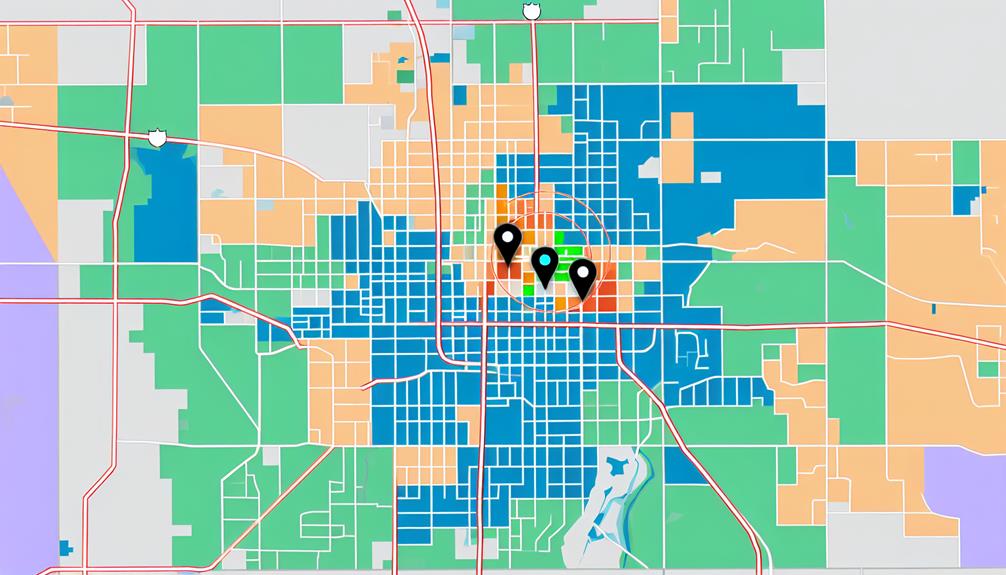If you’re looking to launch a pest control PPC campaign that packs a punch, precision is paramount. But where do you begin?
The world of pay-per-click can be perplexing, but fear not – we’ve got the key strategies to help you unlock the potential of your pest control PPC campaign.
From selecting savvy keywords to fine-tuning your ad performance, this discussion will equip you with the essential tools for maximizing your campaign’s success.
So, let’s unravel the mysteries and set your pest control business on the path to PPC prosperity.
Table of Contents
ToggleKey Takeaways
- Choosing the right keywords is crucial for the success of a pest control PPC campaign.
- Conducting competitor analysis helps identify high traffic keywords.
- Long tail keywords can drive targeted traffic and lead to higher conversion rates.
- Geo-targeting and incorporating local language and references can maximize the effectiveness of the campaign.
Understanding Pest Control Keywords

To maximize the success of your pest control PPC campaign, it’s crucial to understand the significance of choosing the right keywords. Identifying essential, high traffic keywords is the first step in your keyword research. These are the terms that potential customers are using to search for pest control services.
Conducting competitor analysis can help you identify keywords that are driving traffic to your competitors’ websites. This insight can inform your own keyword strategy and help you stay ahead in the market.
Keyword relevance is also crucial. It’s not just about driving traffic to your website; it’s about attracting the right kind of traffic – people who are looking for the pest control services you offer.
Long tail keywords, which are longer and more specific keyword phrases, can be particularly valuable in this regard. They may have lower search volume, but they often have higher conversion rates because they’re more targeted.
Crafting Compelling Ad Copy
Crafting compelling ad copy is essential for capturing the attention of potential customers and driving conversions in your pest control PPC campaign.
To create ad copy that resonates with your audience, consider these key strategies:
- A/B testing ad variations: Experiment with different ad headlines, descriptions, and calls to action to identify which combinations yield the best results. By testing variations, you can refine your ad copy to maximize its effectiveness and relevance.
- Creating targeted landing pages: Ensure that your ad copy aligns with the content on your landing pages. Tailoring landing pages to match the messaging in your ads enhances the user experience and increases the likelihood of conversions. Directing users to specific landing pages that address their needs can lead to higher engagement and conversion rates.
- Incorporating compelling language and offers: Use persuasive language and compelling offers in your ad copy to entice potential customers. Highlight unique selling points, promotions, or guarantees to differentiate your pest control services and incentivize clicks.
Utilizing Geo-Targeting for Local Reach

Maximizing the effectiveness of your pest control PPC campaign requires leveraging geo-targeting to reach local customers and drive impactful engagement. Geo-targeting allows you to focus your advertising efforts on specific geographic locations, ensuring that your ads are seen by the right audience. When it comes to local outreach, geo-targeting is a game-changer.
By targeting demographics in your local area, you can tailor your ads to resonate with the specific needs and preferences of potential customers in your vicinity. Geo-targeting enables you to customize your ad content based on the unique characteristics of different localities. You can incorporate location-specific language, references to local events or landmarks, and even address local pest concerns that are prevalent in certain areas. This level of personalization not only increases the relevance of your ads but also enhances your credibility and trustworthiness among local customers.
Moreover, geo-targeting allows you to allocate your budget more efficiently by focusing on areas with higher potential for conversions. By honing in on specific neighborhoods or regions, you can maximize the impact of your pest control PPC campaign and achieve a higher return on investment.
Implementing Negative Keywords for Cost Efficiency
When implementing negative keywords for cost efficiency in your pest control PPC campaign, carefully consider the specific terms that could potentially detract from your ad’s relevance to ensure optimal targeting. Utilizing negative keyword strategies is crucial for refining your ad’s visibility to the most relevant audience.
This involves identifying and excluding keywords that aren’t aligned with your pest control services, such as ‘DIY,’ ‘free,’ or ‘jobs.’ By doing so, you prevent your ads from being triggered by irrelevant search queries, ultimately saving your ad budget and improving the overall performance of your campaign.
Ad budget management is significantly enhanced through the implementation of negative keywords. It allows you to allocate your resources more effectively by preventing wasteful clicks from users who are unlikely to convert into customers. This results in a more cost-efficient campaign, maximizing the impact of your budget.
Moreover, by incorporating negative keywords, you can refine the focus of your ads, ensuring that they reach potential customers who are actively seeking professional pest control services, ultimately driving higher quality traffic to your website.
Monitoring and Optimizing Ad Performance

To ensure the ongoing success of your pest control PPC campaign, closely monitoring and optimizing ad performance is crucial for refining your targeting and maximizing cost efficiency.
Utilizing conversion tracking allows you to effectively measure the success of your ads by tracking the actions that users take after clicking on them. By analyzing conversion data, you can identify which ads are driving the most valuable actions, such as form submissions or phone calls, and allocate your budget towards the best-performing ones.
Additionally, A/B testing enables you to compare different ad variations to determine which elements resonate most with your target audience. Through this process, you can experiment with various ad headlines, descriptions, and calls to action to continuously improve ad performance.





